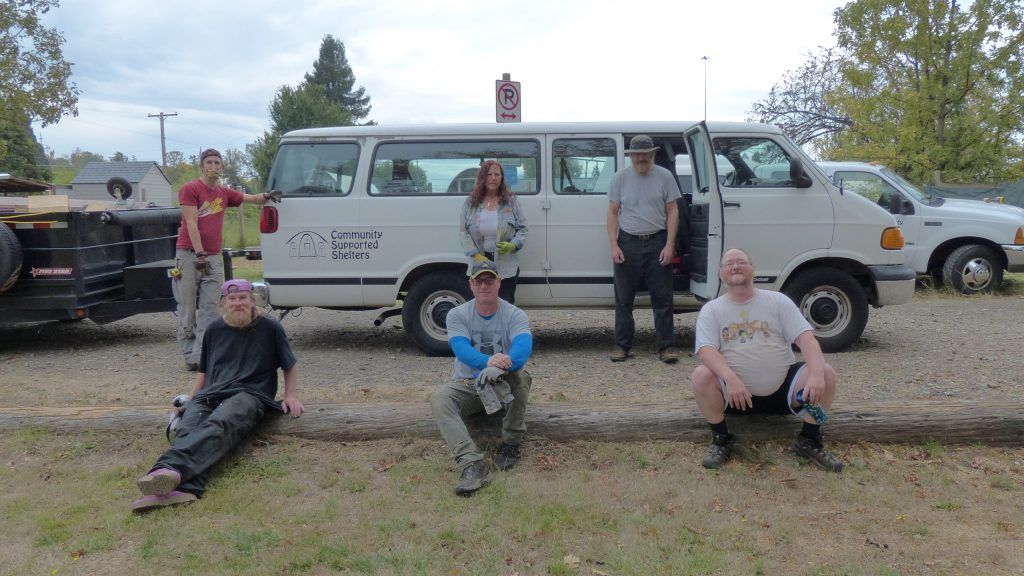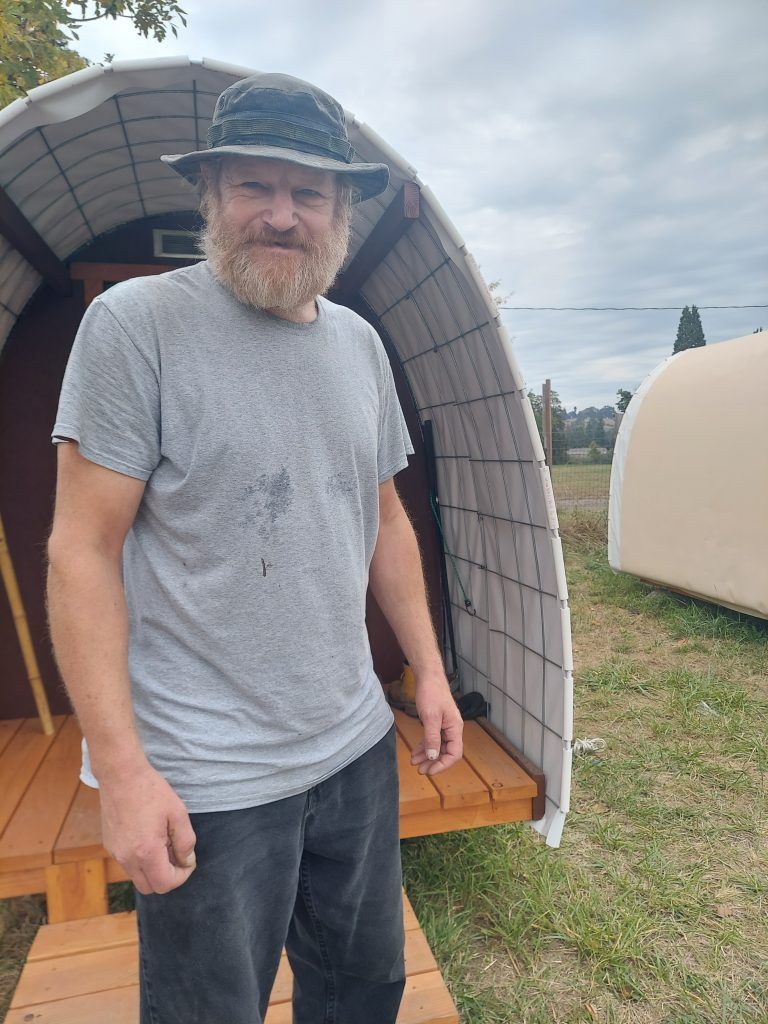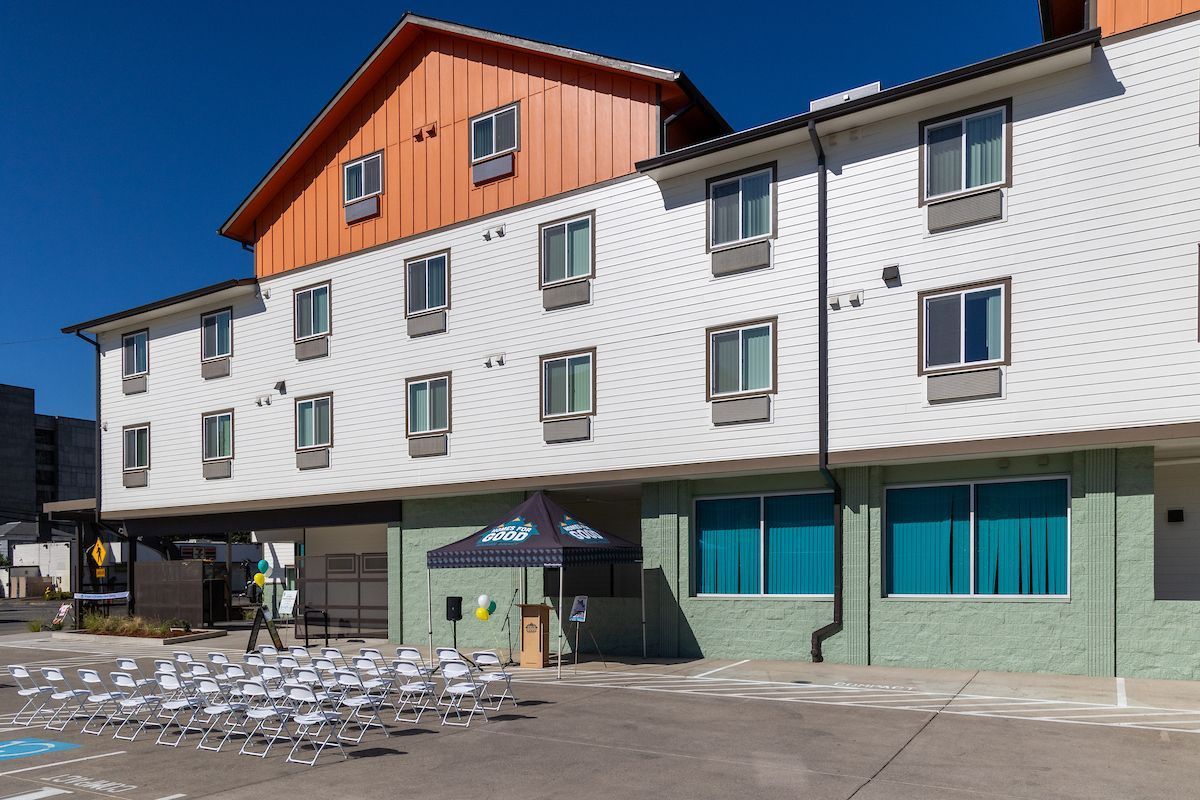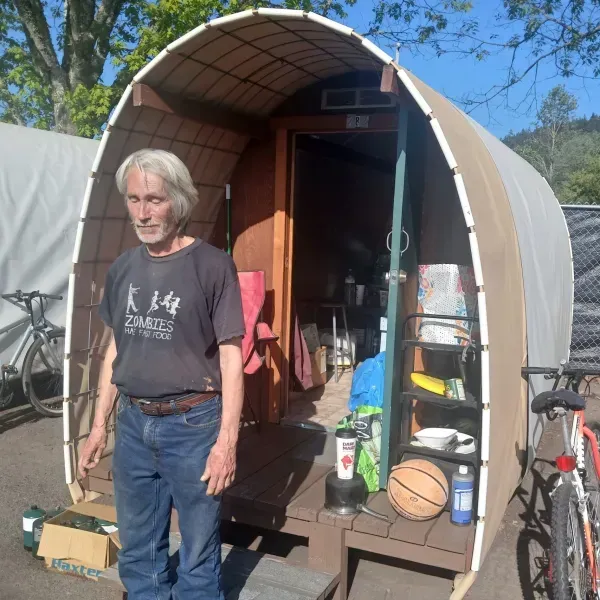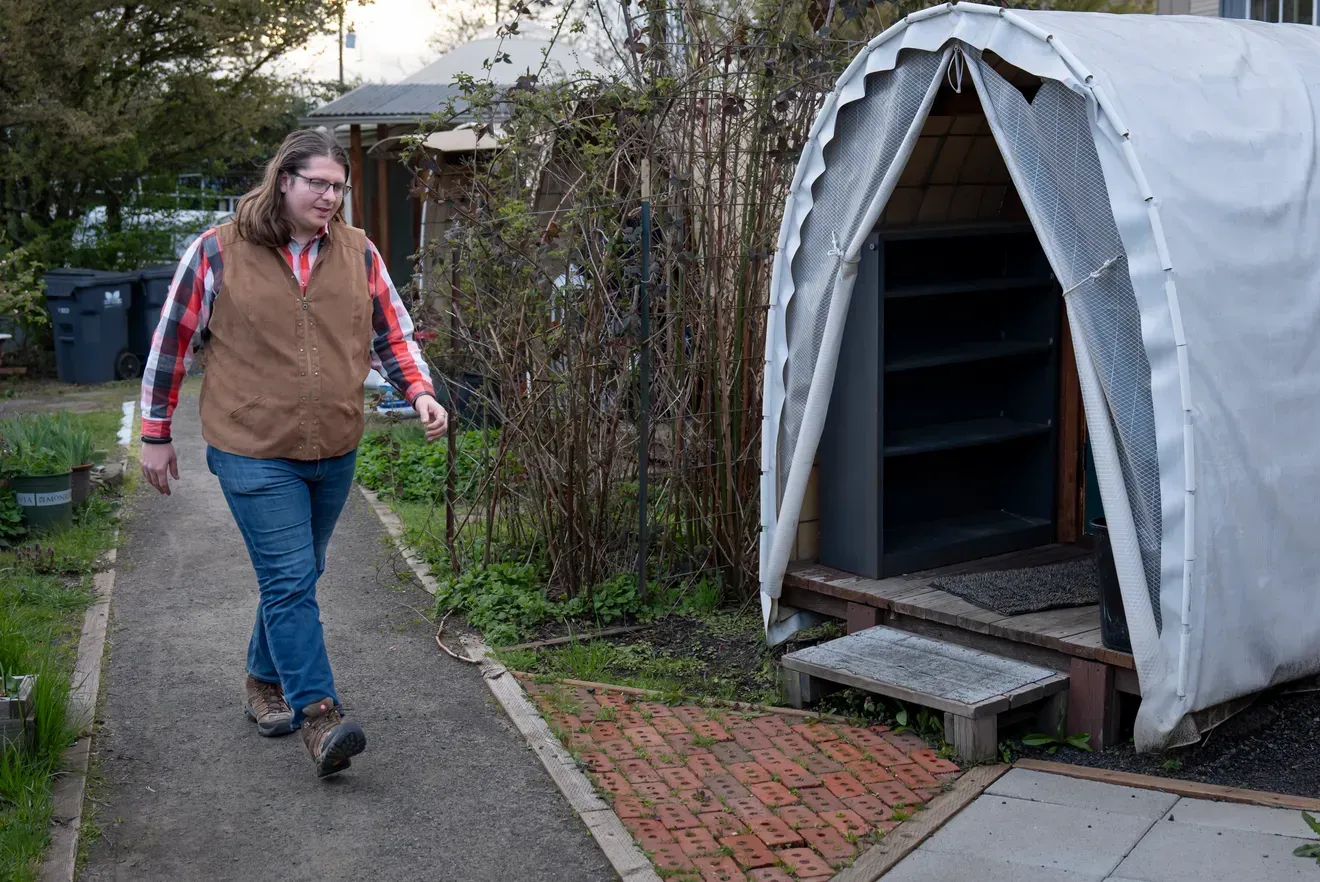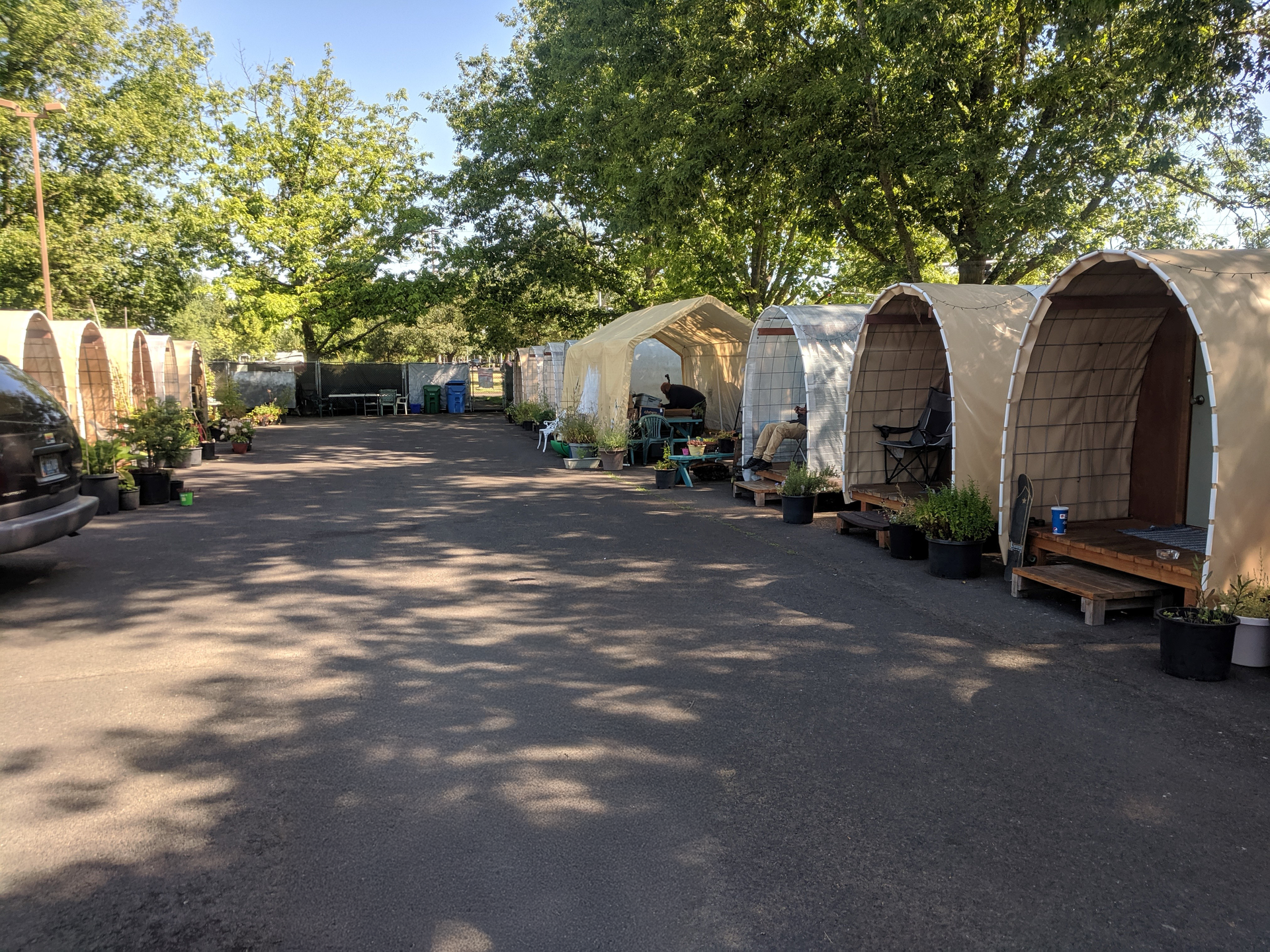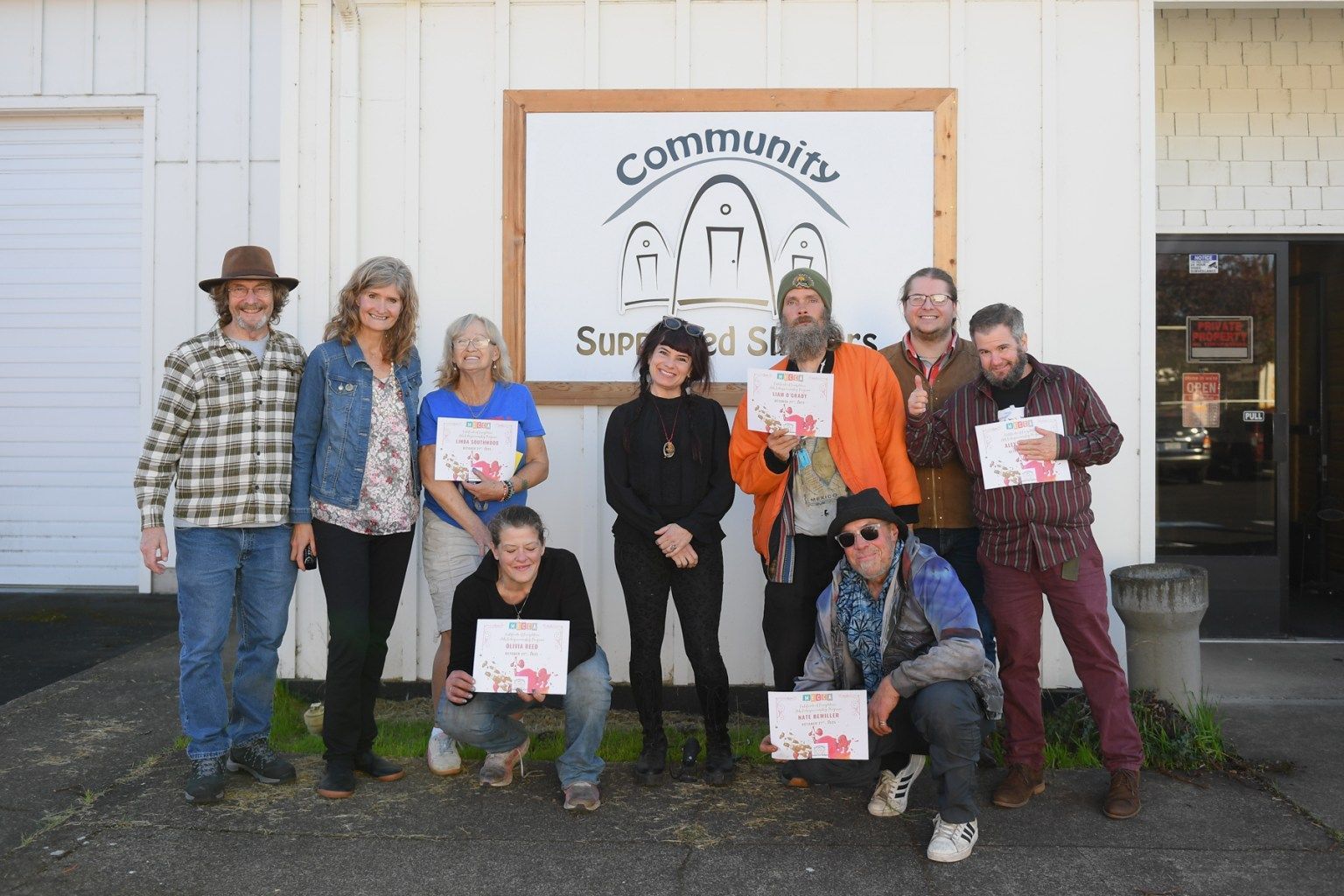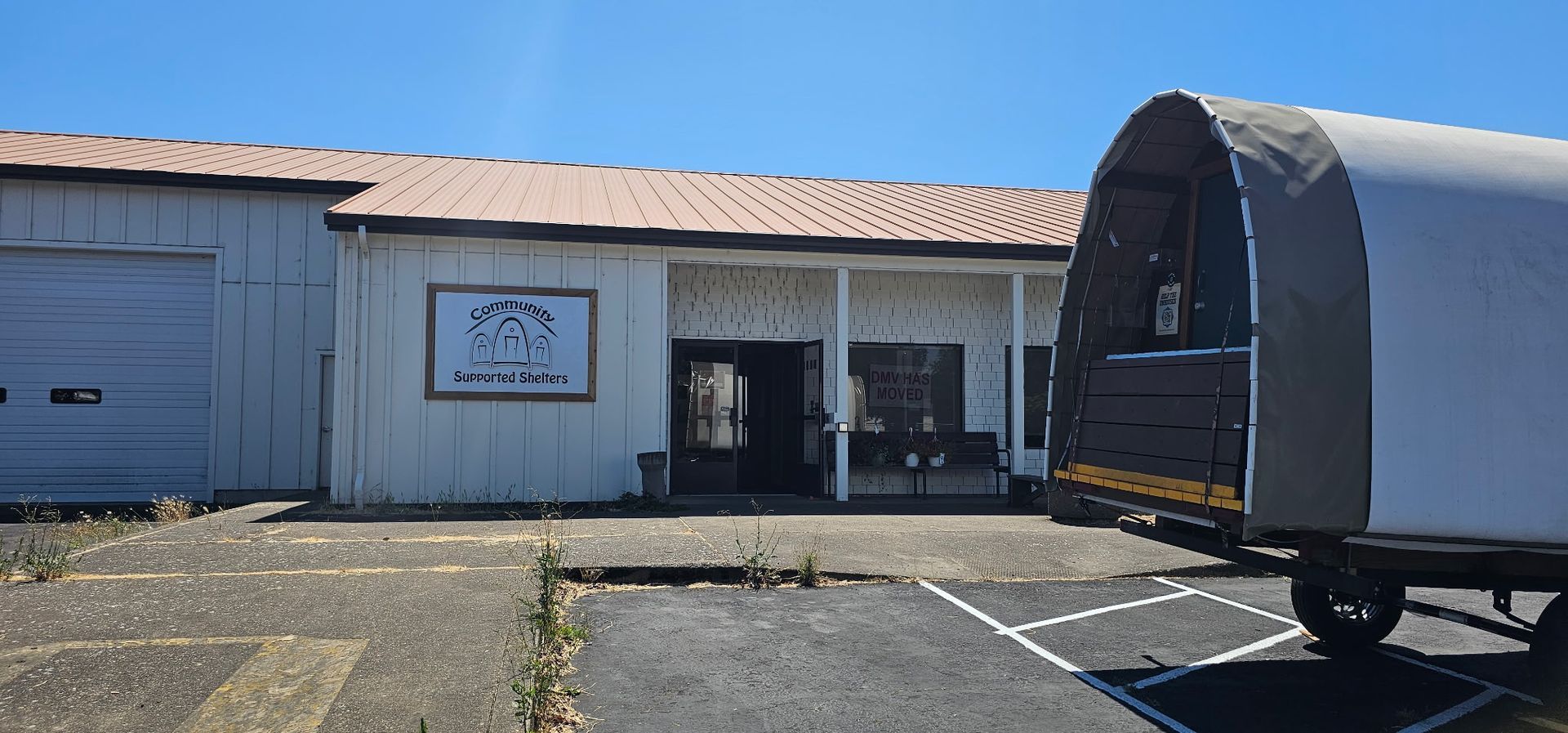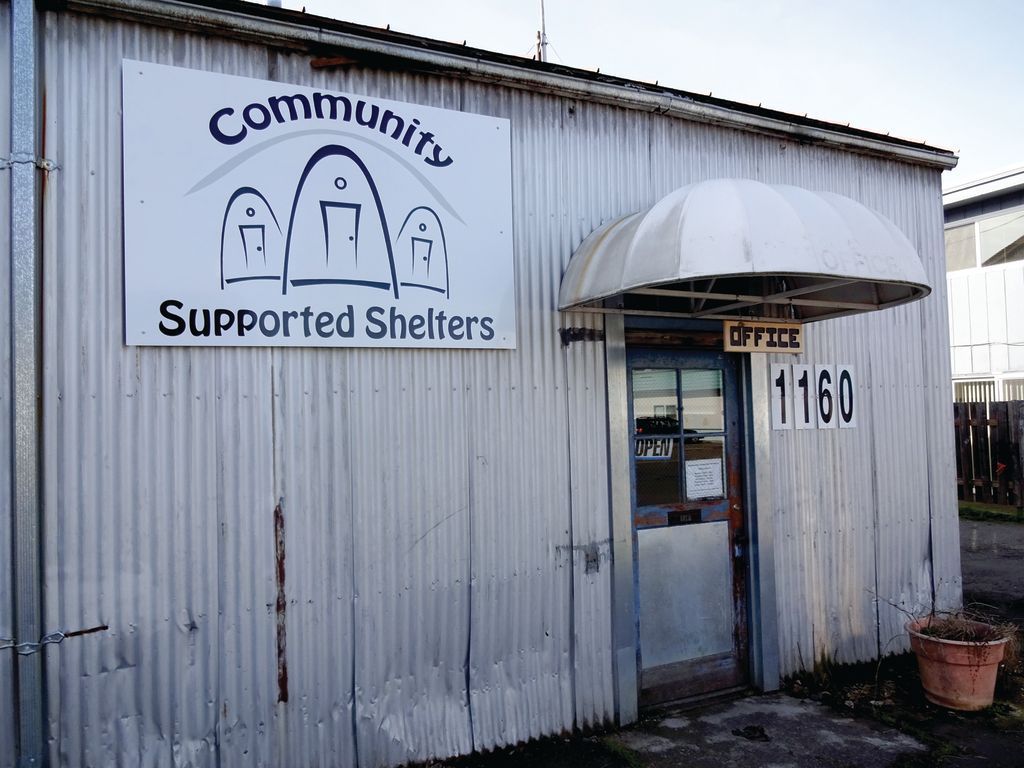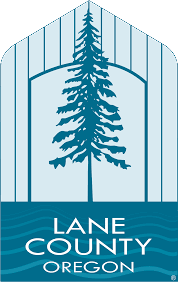Microsites Making a Macro Difference
The Community Supported Shelters’ crew takes a break from setting up at Skinner City Farm.
The onset of the Covid-19 pandemic hit everybody hard, but especially people experiencing homelessness.
Tami Van Meer had been homeless for about a year and a half and was sleeping in a tent with 20 other people in the Dusk-to-Dawn program, a difficult arrangement because of her severe anxiety and particularly dangerous with a highly contagious virus on the loose. In April, she moved into a tent of her own in one of four emergency shelter sites set up by the City of Eugene.
Paul Parkinson, homeless for nine years, got stranded in Eugene when the pandemic hit. He had been visiting his ill father in California and stopped here to see his sister on his way back to Seattle where he had a tent in the woods and a storage unit. But Seattle was an early epicenter of the pandemic, so he made one last trip to gather his things and then, he, too, ended up in one of Eugene’s emergency shelter sites.
But those emergency sites were temporary and as the date for closing three of them approached in late spring, the city was faced with the dilemma of where people like Tami and Paul could go next.
The city turned to Community Supported Shelters and a concept called “Microsites.”
CSS had already, somewhat inadvertently, pioneered this new concept when the opportunity presented by the purchase of new property on West 11th met the changing environment created by the virus. Originally planned as a site for a new Safe Spot, with 15 Huts, that property evolved into what was originally called a “pocket” site with six Huts and the home of the Reboot Station, providing homeless folks with access to showers, hygiene supplies, and other basic healthful services.
The first city-supported Microsite is nestled between Skinner Butte Park and the far north end of Washington Street and called the Skinner City Farm Microsite, named for the flourishing community garden just to the east of it. The same rich river bottom soil holds promise for a productive garden for the camp in the future. The CSS vision for Microsites includes garden spots and other collaborative work projects, like the Reboot Station. Tami and her service dog Ronan and five other people moved into tents on the property in June. Six Huts, a storage shed, and a gravel pathway were built, and Tami moved into her Hut in late summer.
Paul initially moved to a tent at the second new Microsite, on the property of the Eugene Mission, near the CSS Vets Camp Safe Spot. Six Huts were moved from the Vets Camp (two of which have been replaced) and Paul moved into one of them in July.
Chris Plourde is the CSS facilitator for both of these Microsites. He lived at and was on the volunteer management teams at the Expressway and then the Roosevelt Safe Spots before moving into the Shields House transitional housing with four other former Safe Spot residents in August. (Click here to read more about Chris’s new home, the Shields House.) Now he is a paid CSS staff member overseeing these two sites. He says there were some challenges in the early days.
“It’s to be expected. All of this happened very suddenly,” he says, and a few of the people moving from the emergency camps had a hard time adjusting to CSS guidelines. “Some have adjusted very well but others couldn’t leave the street on the street. We had to let them go. We’ve come to recognize that’s a really big factor in being a success in these camps is leaving the street on the street.”
It wasn’t hard for Paul to leave the streets behind. “It’s nice to have a bed, a door, and a key,” he says.
Nor for Tami. “Here, I feel more stable and my anxiety doesn’t get disturbed so much,” she says. “Sometime, I wake up and I have a panic attack. I calm myself and I realize where I am and I can settle myself back down.”
People moving on from Safe Spots have filled the openings in the two Microsites and both camps have begun to build the kind of communities that are central to the CSS approach. “We really try to form communities that look out for each other,” Chris says. “That’s been the most successful thing that has happened in our camps, and we want to try to replicate that as much as we can.”
Tami sees it happening. At a recent Skinner City Farm camp meeting led by Chris, the group talked about tasks that needed to be done, and individuals took responsibility to do them. Tami is doing cooking. “In our little community here,” she says. “We’re all trying to get along and do our own part and make sure everybody’s participating and nobody’s left out.”
About a month after moving into his Hut, Paul started building them—as a paid CSS employee. He works in the shop, building the wall components of the Huts.
A community has also been growing on the Mission Microsite. That makes a big difference for him. “If you’re alone, if you live in the woods and you don’t know anybody and nobody knows you, then all they see is a stranger,” he says. “And breaking through that is a major hurdle. And so, being hooked up with a group, then you have some accountability to the people around you, and you can establish a reputation. People get to know you.”
In early October, the Eugene City Council approved five new rest spot sites, which include expanding the Skinner City Farm site. Those five sites, which will be Safe Spots managed by Community Supported Shelters, will provide a total of 69 new Huts scheduled to be ready by the end of the year. Because those larger sites require City Council approval, they took priority among city staff over Microsite development. But, in a letter to Friendly Area Neighbors, which has proposed a Microsite at the former Kidsports headquarters on Polk Street, Brooke Freed, director of the city manager’s office, said city staff members were “working diligently to advance several new sites that will expand shelter in the community in the coming weeks and months through a combination of the rest stop and microsite models.” Freed said the Microsite proposed by FAN “is certainly one we would like to move forward” among “several” potential sites for the smaller camps.
For CSS, Microsites will continue to be a part of the continuum of its shelter options, which now span from single Huts sponsored by a church or a business or a private property owner to Microsites to Safe Spots to transitional housing like the Shields House.
From the first Huts placed near churches in 2013 to its response to the needs created by Covid, CSS has built its program by responding quickly and directly to the ongoing crisis of people experiencing homelessness. “This is what we do, this is who we are,” says Erik de Buhr, founder and chief operating officer. “We take what we’ve learned and adapt it as we expand our program to address the most pressing needs of the unhoused.”
Tami is working to get disability income and to continue seeking help coping with her anxiety. “I have more structure now,” she says. “So I’m able to make my appointments. I’m able to think clearer and to continue my progression through my therapy and everything.”
She’s gotten lots of help from Chris, the camp facilitator, and others in the camp but she’s also found that she gains from the support she’s able to give others within the Microsite community. “I try to be supportive to other people. It has helped my self-confidence, and my anxiety level isn’t so high.”
And she’s really excited about getting her hands into that rich soil next spring. “I’m really looking forward to the garden area because I have a green thumb,” she says. “I love to play in the dirt.”
When asked what it feels like to have a place she can call her own again, she says, “It makes me really happy. . . . Sorry, I’m going to cry. . . . It’s a good cry, not a bad cry.”


